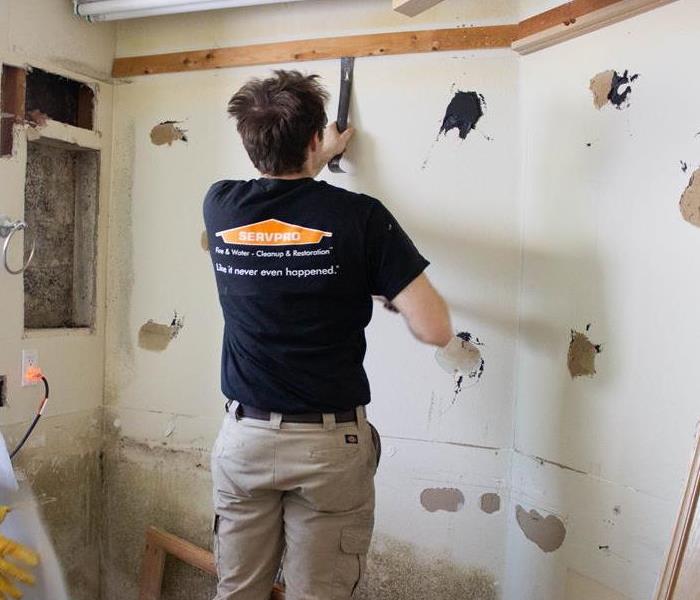4 Typical Areas Where Mold Is Found in Commercial Buildings
3/23/2022 (Permalink)
 SERVPRO doesn't just remove materials affected by water damage and mold, but we get to source of the problem to prevent ongoing damage!
SERVPRO doesn't just remove materials affected by water damage and mold, but we get to source of the problem to prevent ongoing damage!
Even when regular cleaning and caretaking is a part of your everyday lifestyle as a building owner in San Diego, CA keeping mold away forever is near to impossible. It’s bound to show up in areas where water is commonly used and the mildew smell alone can alert you to its whereabouts. However, if no visible mold is apparent and you need to find its location before resorting to mold testing, here are four typical areas where mold can be found in commercial properties.
- Look for mold near water heaters and air-conditioning units. When coolers are used all day, specifically in large buildings where they’re often in constant use, heavy condensation and water leaks can frequently occur. Since this water lingers and seeps into the surrounding walls or floors, mold can begin to grow in unforeseen places like under the carpet or behind drywall.
- Search below bathroom and kitchen sinks. Bathrooms and kitchens see their fair share of consistent water usage, leaving a mildew smell without necessarily displaying visible mold to the naked eye. This is often the case because it’s hiding below the sink where any leaks can spring up, plumbing can become loose or caulking can go bad, needing replacement.
- Check the walls beneath leaky windows. If your building in San Diego, CA sees ample rainfall every year, you’re more likely to find mold growing below your windows. Poor insulation or leaky window frames are high areas for trapped moisture.
- Investigate basement floors or cellars that have been previously flooded. Any low-level rooms like basements that have endured flood damage leave a lot of damp walls and floor space if they’re not dried or replaced properly by professionals. Given that these areas are generally dark, receiving little sunlight or fresh air, there’s a high probability mold is present.
If no visible mold can be found and you’re intending to have mold testing done in your building, try looking in any of these typical areas where mold grows frequently. When the mildew smell can’t give away its location, any of these areas may reveal the mold you’re looking for.





 24/7 Emergency Service
24/7 Emergency Service